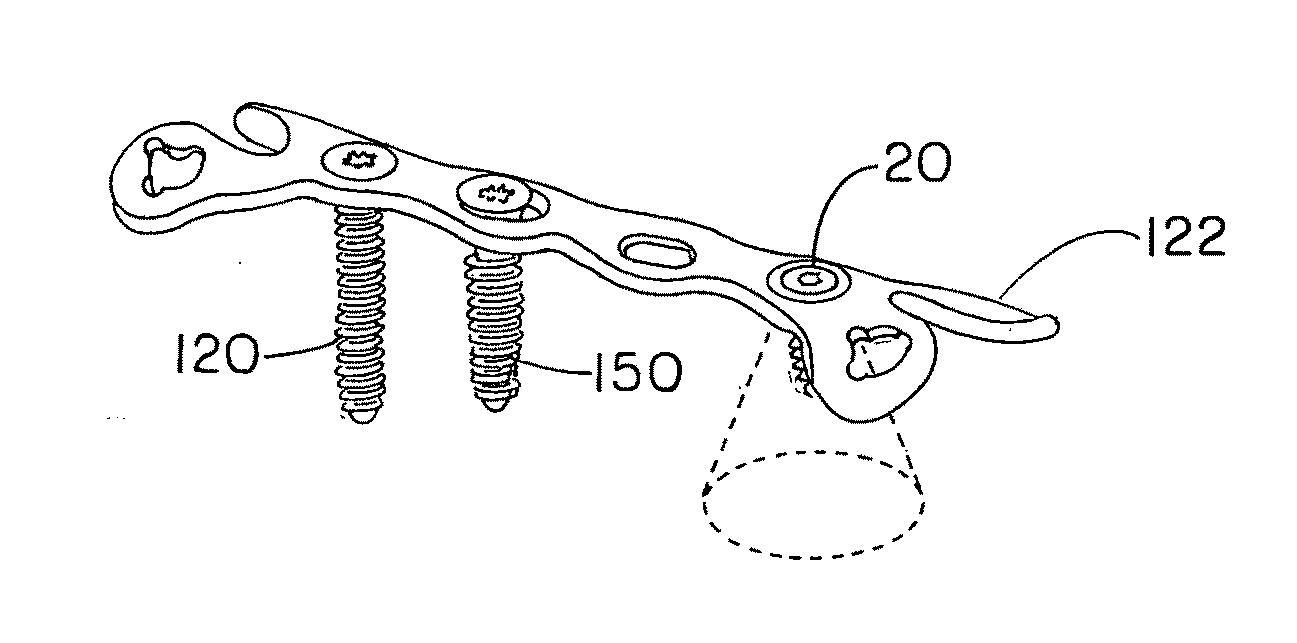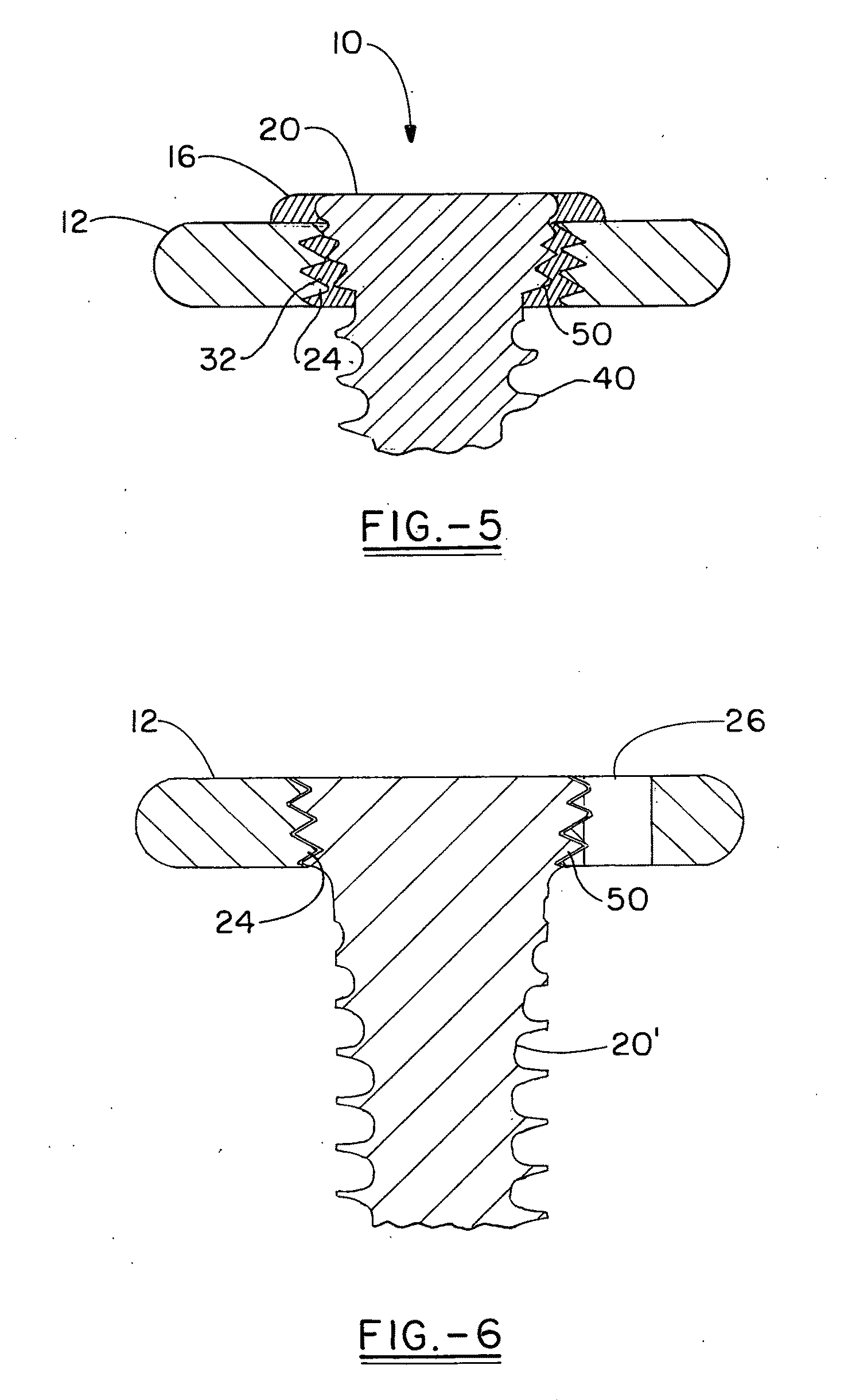System for achieving selectable fixation in an orthopedic plate
a technology of selectable fixation and orthopedic plates, which is applied in the field of orthopaedic plates and fastener systems, can solve the problems of overly rigid locking structures, complex interactions between the fasteners, and the bone, and achieve the effect of improving the strength of fixation and improving the locking
- Summary
- Abstract
- Description
- Claims
- Application Information
AI Technical Summary
Benefits of technology
Problems solved by technology
Method used
Image
Examples
Embodiment Construction
[0036]FIG. 1 shows an exploded view of a variable axis locking mechanism assembly in accordance with the present invention that is further illustrated in FIGS. 2 through 5. FIG. 5 shows a cross section of the assembly of FIG. 1. The assembly 10 includes an implant member that is shown as a plate 12, a locking insert 16 and a variable locking fastener, which is shown as a screw 20. For the purpose of this description, the plate is shown in FIGS. 1, 2, 5, and 6 as part of an annular portion of a plate including a through hole 22 with internal threads 24, and optionally grooves 26 that act as seats for a drill guide. The plate could have any appropriate shape according to the application with which it is used, distal radius plates, calcaneal plates, long bone plates, plates for the clavicles, spinal plates, plates for use in the hand and foot, or any other surgical implant and accordingly is illustrated in FIGS. 7-9 as having a modified X-shape where the plate has diagonally opposed pa...
PUM
 Login to View More
Login to View More Abstract
Description
Claims
Application Information
 Login to View More
Login to View More - R&D
- Intellectual Property
- Life Sciences
- Materials
- Tech Scout
- Unparalleled Data Quality
- Higher Quality Content
- 60% Fewer Hallucinations
Browse by: Latest US Patents, China's latest patents, Technical Efficacy Thesaurus, Application Domain, Technology Topic, Popular Technical Reports.
© 2025 PatSnap. All rights reserved.Legal|Privacy policy|Modern Slavery Act Transparency Statement|Sitemap|About US| Contact US: help@patsnap.com



